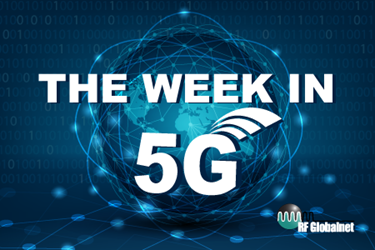The Week in 5G: 5/12/2020 — Huawei, Automakers form 5G "Ecosystem" Alliance; Australia Eyes 850 MHz and 900 MHz Bands for 5G
By Ed Biller

Huawei Technologies has formed an alliance with 18 companies to (*ahem*) accelerate the rollout of 5G-connected vehicles in China.
The world’s largest telecommunications equipment supplier, reports the South China Morning Post, enlisted China’s most prominent automakers in its “5G automotive ecosystem” — including “state-owned carmakers FAW Group Corp, SAIC Motor Corp, Dongfeng Motor Corp, Chang’an Automobile (Group) Co, Beijing Automotive Industry Holding, Anhui Jianghuai Automobile Co, Nanjing Automobile (Group) Corp and Chery Automobile Co. … [plus] BYD Co, Great Wall Motors, Guangzhou Automobile Group and electric bus manufacturer Zhengzhou Yutong Group.”
A statement released by Huawei claimed “the next two years will be critical” to establishing a connected car market, but did not speculate on the volume of connected cars the companies aspire to release in the domestic market.
As a whole, China is projected to claim 70 percent of all 5G smartphone contracts by the end of 2020. Nikkei Asian Review reports that China already has over 50 million 5G handset subscribers and consumers are able to choose from “dozens” of 5G handsets. While South Korea is further along in terms of national rollout, it counts only 5 million 5G subscribers.
The report offers a glum rundown of delays affecting other nations’ 5G rollouts: “Because of the coronavirus, France has indefinitely postponed allotment of 5G spectrum. Spain and Austria have pushed back their own auctions as well. In the U.K., where 5G service began a year ago, 5G base stations have even been torched by people believing rumors that 5G signals carry the virus.”
In addition to the now-common communications pole torchings, recent reports identify a new tactic for anti-5G miscreants: planting razor blades behind anti-5G posters. Prodding these dangerous trends forward are features including “Is 5G Going to Kill Us All?” in The New Republic.
The short answer: “No” — though Joel Hruska of Extreme Tech provides a longer answer while debunking the TNR arguments’ logic in a piece titled “5G Will Not Kill Us All, but Stupidity Might.”
In technology news, Qualcomm announced this week the Snapdragon 768G processor, promising better CPU and GPU performance than its predecessor, the 765G, reports The Verge.
“The main difference between the regular 765 and the 765G was the addition of a Qualcomm Adreno 620 GPU, which the company promised would offer up to 20 percent improved performance over the standard Snapdragon 765. Qualcomm says that it’s managed to improve that GPU performance by an additional 15 percent on the 768G, in addition to improving the clock speed on the CPU up to 2.8GHz from 2.4GHz (for a similar 15 percent improvement over the 765G),” the report states, noting that the 768G “is meant mainly for devices that look to offer improved gaming experiences. It’ll make its debut on the Xiaomi Redmi K30 5G Racing Edition.”
In spectrum allocation news, the Australian Communications and Media Authority (ACMA) has released its policy outline to reallocate the 850 MHz and 900 MHz bands for 5G services, noting that they are “not optimised for LTE or 5G services,” reports ZDNet.
The article states the 850Mhz could be used for public safety mobile broadband for emergency services, adding that the ACMA will begin its formal consultations to reallocate the bands soon, per Communications Minister Paul Fletcher.
Next door in New Zealand, where a recent spectrum auction was scrapped due to the pandemic, the government has directly allocated spectrum in the 3.5 GHz band for 5G usage. Spark and 2degrees Mobile each were offered rights to 60 MHz of spectrum, while Dense Air has been offered 40 MHz, reports Reuters. The report notes that Vodafone Zealand did not apply to participate in the postponed auction, so it wasn’t allocated spectrum.
Spark Chief Executive Jolie Hodson told Reuters that her company and others hope to convince the New Zealand government to move up its longer-term spectrum auction currently slated for November 2022.
Related, in the U.S., the government’s failure to free up more mid-band spectrum is one of two reasons the U.S. 5G rollout has been an “overhyped disappointment,” states a recent TechDirt article. The piece also points a finger of blame at telecom providers’ lack of incentive “to deploy fiber anywhere it doesn't make the most immediate sense from an ROI perspective” due to their wide-ranging monopolies.
Citing an OpenSignal study, TechDirt notes that seven countries have achieved 5G download speeds faster than Wi-fi — and the U.S. is not on that list.
“We've relied heavily on low spectrum bands (decent at providing service at range but not much faster than 4G), or high-band, millimeter wave (mmWave) spectrum (which offers very fast speeds in select urban areas, but suffers from distance and wall penetration issues). The result is 5G networks that are offering a fraction of the speeds seen elsewhere around the world,” states the article.
